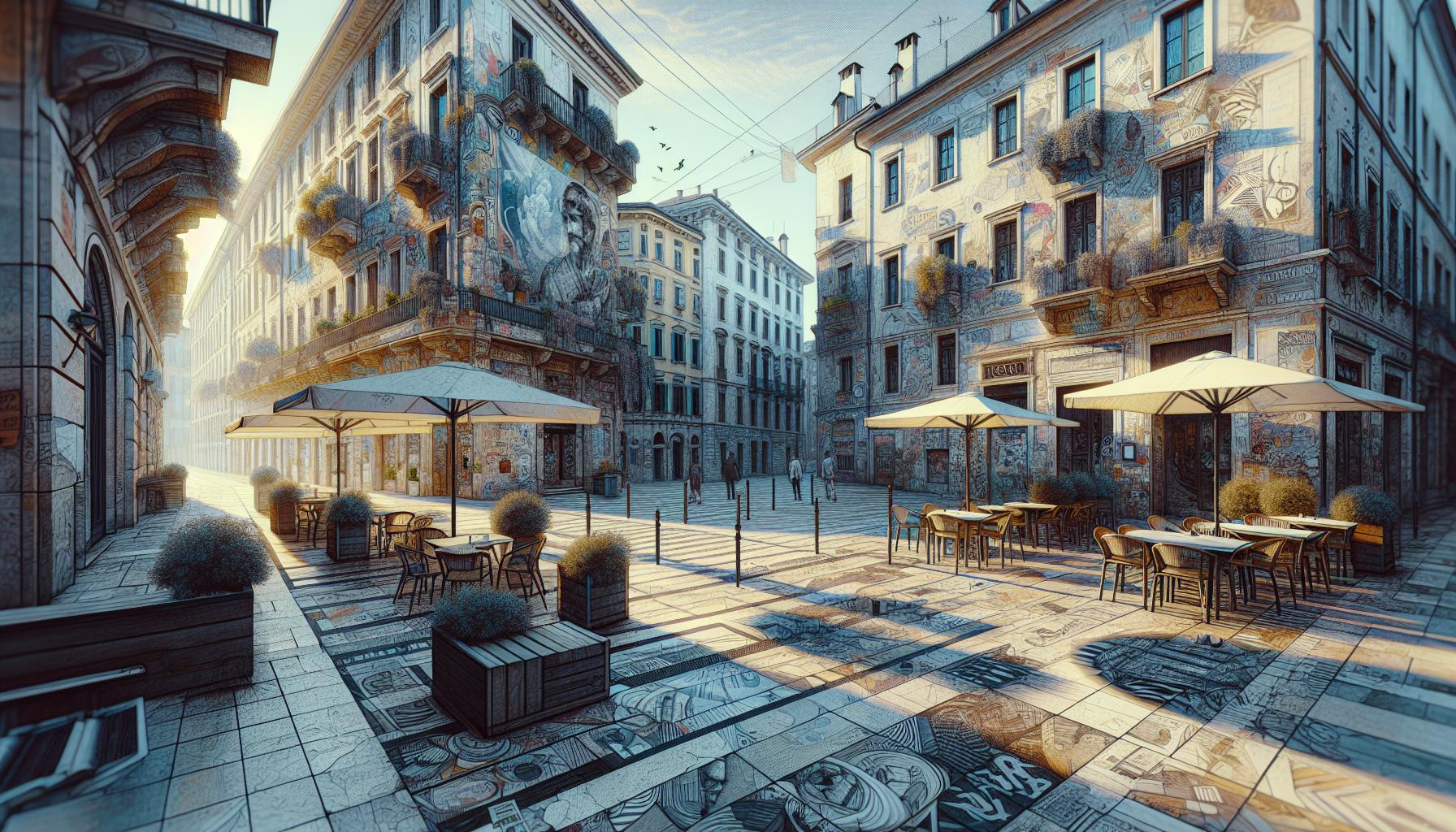Understanding Depth and Perspective in Urban Street Art
Dive into the world of urban street art and uncover how depth and perspective transform cityscapes into living, breathing canvases. Discover techniques and tips that elevate your street art to new heights.

Understanding Depth and Perspective in Urban Street Art
Urban street art is a vibrant tapestry that colors the cityscape, offering both social commentary and aesthetic enrichment to urban environments. Artists who work in this medium often face unique challenges that differ from traditional art environments, including the need to adapt to large, often uneven surfaces and the fleeting nature of the work due to external factors. Understanding depth in painting and mastering perspective techniques are crucial skills for street artists aiming to create impactful and engaging pieces. This post will delve into these essentials with expert-level insights and street art tips to elevate your cityscape art.
The Essence of Depth in Urban Street Art
Depth in painting is an artistic technique used to make artworks appear three-dimensional. For urban street artists, creating depth is vital; it allows a flat surface like a wall to come alive with energy and movement. Depth can be accomplished through the use of various methods such as shading, color temperature, overlap, and size scaling, among other strategies.
The urban environment provides a unique canvas that can be both a boon and a challenge. The irregularities of wall surfaces can be used to accentuate depth, or conversely, they can distort perspective if not carefully considered. Knowing how to create and manipulate depth can transform a good street artwork into an extraordinary one.
Perspective Techniques in Street Art
Perspective techniques are crucial in helping artists create realistic depictions of depth. Urban street art, often large and expansive, requires a mastery of these techniques to achieve a convincing illusion of space. Techniques such as linear perspective, atmospheric perspective, and foreshortening are often employed.
- Linear Perspective: This technique involves creating depth by having parallel lines converge at a single point on the horizon, known as the vanishing point. It's essential for creating scenes that draw the viewer into the artwork, fostering a sense of immersion.
- Atmospheric Perspective: This technique uses color and clarity to simulate the effect of distance. Objects in the foreground tend to be more detailed and saturated, while objects in the background appear hazier and less distinct.
- Foreshortening: This involves the visual compression of an object or figure as it recedes in space, which is crucial for dynamic compositions where elements seem to pop out of the wall.
Street Art Tips for Achieving Depth and Perspective
When working with urban street art, implementing these techniques effectively requires practice and forethought. Here are some street art tips to help you master depth and perspective.
- Plan Ahead: Before setting paint to wall, draft a detailed sketch of your mural that incorporates both depth and perspective. Consider the placement of vanishing points and how they interact with the physical space.
- Use a Grid System: A grid can help transfer your sketch to a larger mural surface, ensuring proportions and perspective are maintained. This is particularly useful in detailed cityscape art.
- Leverage the Environment: Utilize existing architectural elements—such as windows, doors, and corners—to aid in achieving realistic depth. Painting around these elements can enhance your imagery's three-dimensionality.

Challenges and Solutions in Cityscape Art
Working in urban environments comes with its own set of challenges. Factors such as scale, surface texture, and environmental conditions can affect the outcome of your artwork.
- Adapting to Scale: Large murals require you to maintain consistent depth and perspective across a bigger space. Use scaffolding and step back frequently to assess your work from a distance to maintain consistency.
- Surface Irregularities: Urban surfaces are rarely smooth. Embrace the texture by using it to emphasize features or elements in your composition. Experiment with textured brushes or rollers to counteract the effects of uneven surfaces.
- Weather Conditions: Street art in urban settings is susceptible to the elements. Use weather-resistant paints and sealants to prolong the life of your artwork.
Exploring Cityscape Art
Cityscape art in urban street art provides a canvas for artists to reflect the city's dynamic life and energy. When executing a cityscape mural, it's essential to incorporate both depth and perspective to capture the bustling essence of urban life completely.
- Capture Light and Shadow: Observe how natural light interacts with the urban environment at different times of day. Use this observation to create dynamic lighting within your mural. This can serve as an additional layer of depth.
- Dynamic Composition: Use diagonal lines and curving forms to guide the viewer's eye throughout the composition. The movement not only adds energy but also opens up the cityscape to new interpretations.
- Incorporate Human Elements: People are an integral part of the urban fabric. Including human figures, rendered with accurate perspective, can bring your cityscape to life and offer relatable touchpoints for viewers.
Conclusion
Mastering depth and perspective in urban street art is crucial for artists who wish to push the boundaries of their work. By understanding these artistic principles and their application within the urban context, you can create immersive, compelling artworks that transform the everyday cityscape into a vibrant tapestry of color and narrative.
Embrace the challenges that come with urban street art. See them not as constraints but as opportunities to innovate and experiment. With a thorough grasp of depth and perspective techniques, you can elevate your street art to new heights of artistic expression.
